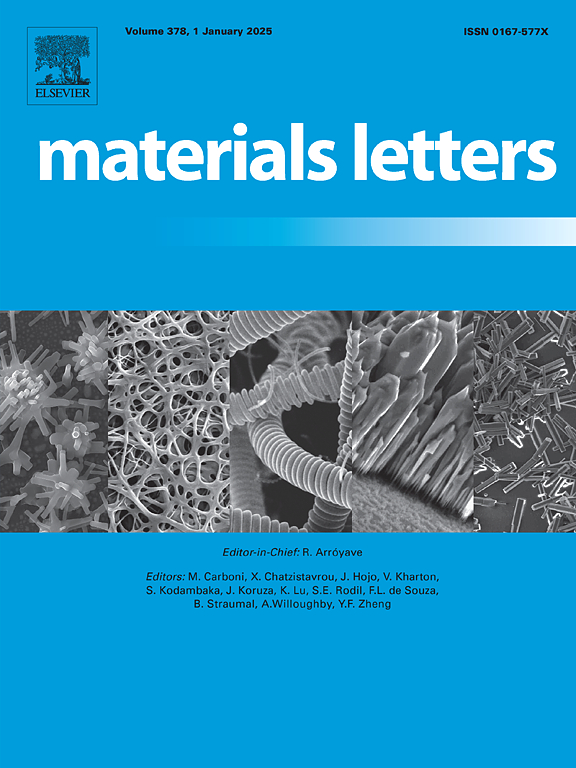Effects of constituent materials on resin separation from CFRP by electrical treatment
IF 2.7
4区 材料科学
Q3 MATERIALS SCIENCE, MULTIDISCIPLINARY
引用次数: 0
Abstract
Carbon fiber-reinforced plastics (CFRP) waste is typically recycled through feedstock recycling, which recovers carbon fibers from CFRP by employing an aggressive thermal process to break down the resin matrix. However, this process faces challenges, as oxygen gas during heating has difficulty penetrating dense composites, resulting in low-quality recovered carbon fibers (rCFs). It was demonstrated that high-grade rCFs could be obtained by combining the thermal process with a short period of electrical treatment (ET). In this study, we investigated the effects of fiber orientation and matrix type on the separation efficiency (SE) by ET using uni-directional (UD-) and plain-weave (PW-) CFRPs, as well as twill-weave CFRTP. The results indicated that the SE value of UD-CFRP was nearly equal to that of PW-CFRP, suggesting that fiber orientation did not significantly affect resin removal. In contrast, the SE value of CFRTP was four times higher than that of CFRPs at a low constant voltage, as the separation resistance of the matrix decreased owing to thermal-oxidative degradation caused by moderate temperatures resulting from Joule heat and oxygen generated on the anode side.
组成材料对电处理CFRP树脂分离的影响
碳纤维增强塑料(CFRP)废物通常通过原料回收来回收,原料回收是通过采用积极的热过程来分解树脂基体,从而从CFRP中回收碳纤维。然而,该工艺面临着挑战,因为加热过程中的氧气难以穿透致密复合材料,导致低质量的回收碳纤维(rcf)。结果表明,采用热处理和短时间电处理相结合的方法可以获得高质量的rcf。在这项研究中,我们研究了纤维取向和基质类型对单向(UD-)、平纹(PW-)和斜纹织物CFRTP的ET分离效率(SE)的影响。结果表明,UD-CFRP的SE值与PW-CFRP的SE值基本相等,说明纤维取向对树脂去除率没有显著影响。相比之下,低恒压条件下CFRTP的SE值比CFRPs高4倍,这是由于阳极侧产生焦耳热和氧气,温度适中,导致基体热氧化降解,分离电阻降低。
本文章由计算机程序翻译,如有差异,请以英文原文为准。
求助全文
约1分钟内获得全文
求助全文
来源期刊

Materials Letters
工程技术-材料科学:综合
CiteScore
5.60
自引率
3.30%
发文量
1948
审稿时长
50 days
期刊介绍:
Materials Letters has an open access mirror journal Materials Letters: X, sharing the same aims and scope, editorial team, submission system and rigorous peer review.
Materials Letters is dedicated to publishing novel, cutting edge reports of broad interest to the materials community. The journal provides a forum for materials scientists and engineers, physicists, and chemists to rapidly communicate on the most important topics in the field of materials.
Contributions include, but are not limited to, a variety of topics such as:
• Materials - Metals and alloys, amorphous solids, ceramics, composites, polymers, semiconductors
• Applications - Structural, opto-electronic, magnetic, medical, MEMS, sensors, smart
• Characterization - Analytical, microscopy, scanning probes, nanoscopic, optical, electrical, magnetic, acoustic, spectroscopic, diffraction
• Novel Materials - Micro and nanostructures (nanowires, nanotubes, nanoparticles), nanocomposites, thin films, superlattices, quantum dots.
• Processing - Crystal growth, thin film processing, sol-gel processing, mechanical processing, assembly, nanocrystalline processing.
• Properties - Mechanical, magnetic, optical, electrical, ferroelectric, thermal, interfacial, transport, thermodynamic
• Synthesis - Quenching, solid state, solidification, solution synthesis, vapor deposition, high pressure, explosive
 求助内容:
求助内容: 应助结果提醒方式:
应助结果提醒方式:


